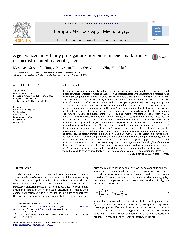摘要
Recognizing that modern materials contain multiple phases with inherent random microstructure and in situ constituent material properties that are oft uncharacterizable with exactness, this research uses benchmark computational studies to unveil scenarios where uncertainties significantly affect macroscopic behavior. The benchmark studies, which serve as numerical experiments capturing the main features of a wide class of problems in solid mechanics, suggest a generalized uncertainty propagation criterion A whose assessment may be used to understand whether uncertainties may non-negligibly propagate to apparent system properties. The new A-criterion combines four features of a microstructured material system: the microstructure size (micro), material property correlation length (micro), structure size (macro), and global length scale of loading (macro). We compare the A-criterion with the familiar one from classical homogenization that relates a statistical volume element size to the size of the microstructure it contains. This work is motivated by the knowledge paucity of uncertainty's place in multiscale analysis and the great computational expense, either in runtime or implementation, of uncertainty propagation methods. The uncertainties considered are material property uncertainty of the separate phases comprising each problem's microstructure and the statistical description of the microstructure itself. The problems involve quasi-static elasto-plasticity, wave propagation in viscoelastic composite, and pattern transition in periodic voided elastomer. Besides the criterion, observed physical behavior for the benchmark problems is also presented in the context of input uncertainty. A close examination of the boundary condition effect on uncertainty propagation suggests that localization increases the characteristic microstructure length, which we represent with a simple deformation-dependent microstructure evolution function and that increases uncertainty in apparent system properties. This work provides a systematic framework for modelers to understand when they may reliably waive the consideration of uncertainty for their application or when their application mandates it.
- 出版日期2013-2
- 单位西北大学
